Intel Haswell-EP Xeon 12 Core Review: E5-2650L V3 and E5-2690 V3
by Ian Cutress on November 6, 2014 9:00 AM EST- Posted in
- CPUs
- IT Computing
- Intel
- Xeon
- Enterprise
- LGA2011-3
- Haswell EP
CPU Benchmarks
The dynamics of CPU Turbo modes, both Intel and AMD, can cause concern during environments with a variable threaded workload. There is also an added issue of the motherboard remaining consistent, depending on how the motherboard manufacturer wants to add in their own boosting technologies over the ones that Intel would prefer they used. In order to remain consistent, we implement an OS-level unique high performance mode on all the CPUs we test which should override any motherboard manufacturer performance mode.
HandBrake v0.9.9: link
For HandBrake, we take two videos (a 2h20 640x266 DVD rip and a 10min double UHD 3840x4320 animation short) and convert them to x264 format in an MP4 container. Results are given in terms of the frames per second processed, and HandBrake uses as many threads as possible.
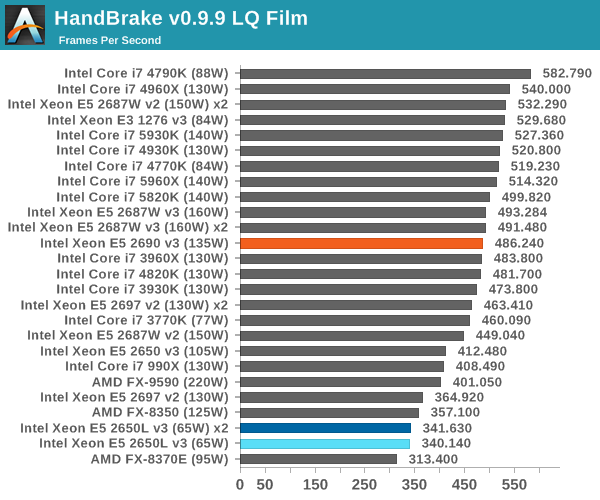

With the low single core speed of the 2650L v3, processing smaller frames can be rather slow. When the size of the frames is larger, and reside in the computational parts of the cores for longer, a better speedup is achieved. However, the 2690 v3 still wins out.
Agisoft Photoscan – 2D to 3D Image Manipulation: link
Agisoft Photoscan creates 3D models from 2D images, a process which is very computationally expensive. The algorithm is split into four distinct phases, and different phases of the model reconstruction require either fast memory, fast IPC, more cores, or even OpenCL compute devices to hand. Agisoft supplied us with a special version of the software to script the process, where we take 50 images of a stately home and convert it into a medium quality model. This benchmark typically takes around 15-20 minutes on a high end PC on the CPU alone, with GPUs reducing the time.

Photoscan is part single thread and part multithread, and the combination of the two puts the 2690 v3 well ahead of the 2650L v3 x2 despite double the cores.
Dolphin Benchmark: link
Many emulators are often bound by single thread CPU performance, and general reports tended to suggest that Haswell provided a significant boost to emulator performance. This benchmark runs a Wii program that raytraces a complex 3D scene inside the Dolphin Wii emulator. Performance on this benchmark is a good proxy of the speed of Dolphin CPU emulation, which is an intensive single core task using most aspects of a CPU. Results are given in minutes, where the Wii itself scores 17.53 minutes.
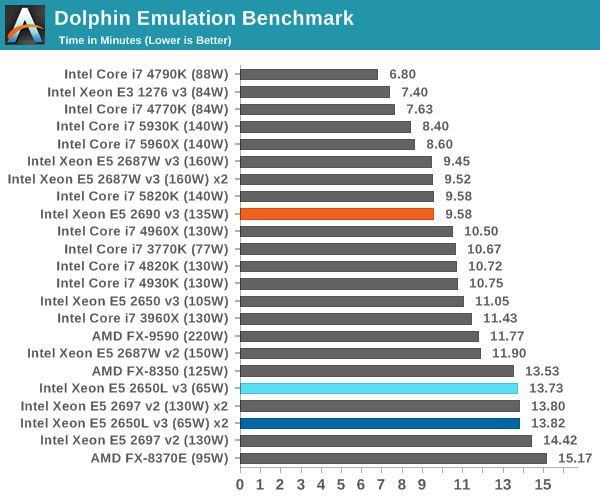
Dolphin is purely single threaded, and the 2690 v3 sits on par with the 5820K.
WinRAR 5.0.1: link
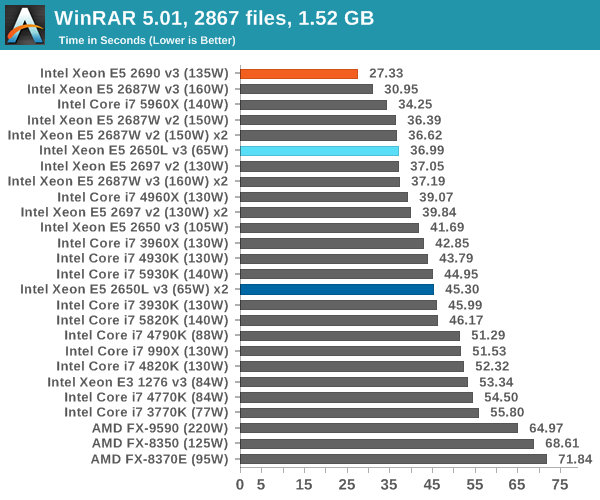
PCMark8 v2 OpenCL
A new addition to our CPU testing suite is PCMark8 v2, where we test the Work 2.0 suite in OpenCL mode.
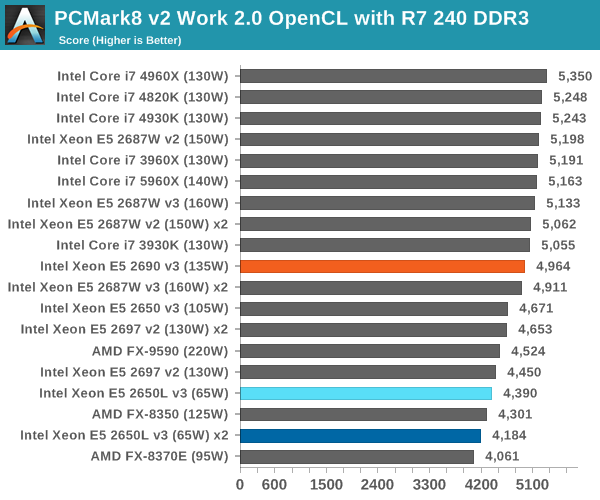
Hybrid x265
Hybrid is a new benchmark, where we take a 4K 1500 frame video and convert it into an x265 format without audio. Results are given in frames per second.
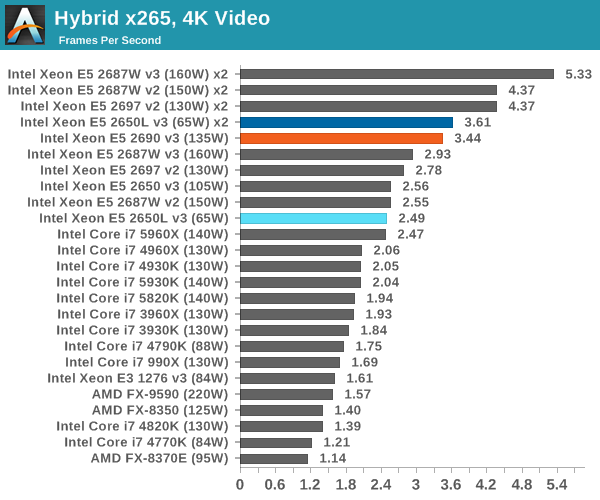
For x265 conversion, more cores rules the roost and we see the 2650L v3 x2 setup surpass the 2690 v3. Although the 0.17 FPS difference might not be worth the $600 outlay depending on how much x265 encoding you do.
Cinebench R15
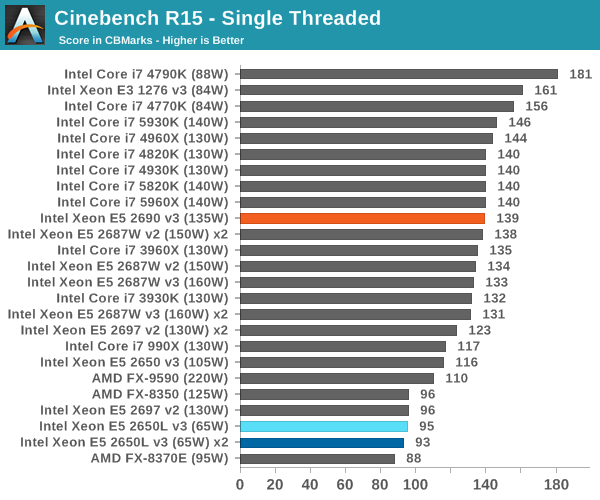
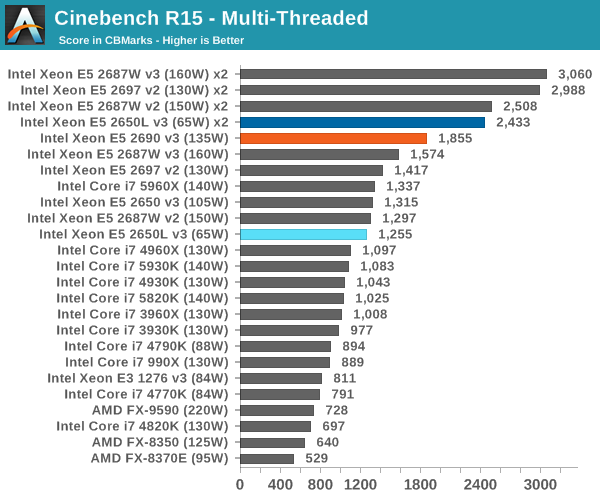
3D Particle Movement
3DPM is a self-penned benchmark, taking basic 3D movement algorithms used in Brownian Motion simulations and testing them for speed. High floating point performance, MHz and IPC wins in the single thread version, whereas the multithread version has to handle the threads and loves more cores.
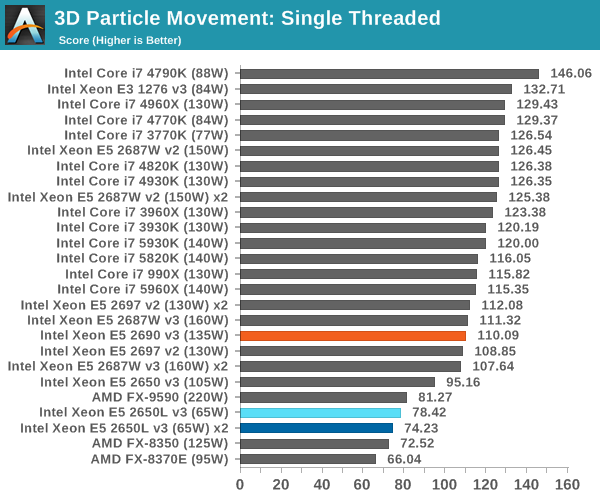

FastStone Image Viewer 4.9
FastStone is the program I use to perform quick or bulk actions on images, such as resizing, adjusting for color and cropping. In our test we take a series of 170 images in various sizes and formats and convert them all into 640x480 .gif files, maintaining the aspect ratio. FastStone does not use multithreading for this test, and results are given in seconds.
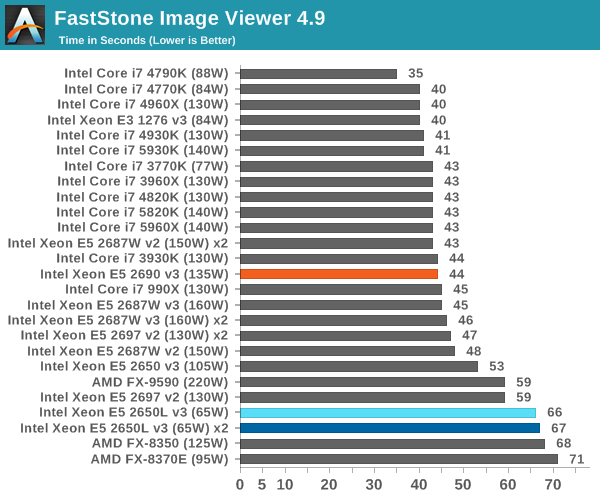
Web Benchmarks
General usability is a big factor of experience, especially as we move into the HTML5 era of web browsing. For our web benchmarks, we take four well known tests with Chrome 35 as a consistent browser.
Sunspider 1.0.2
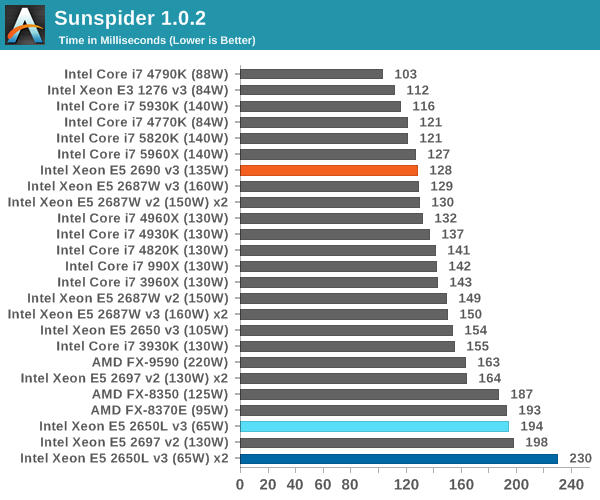
Mozilla Kraken 1.1
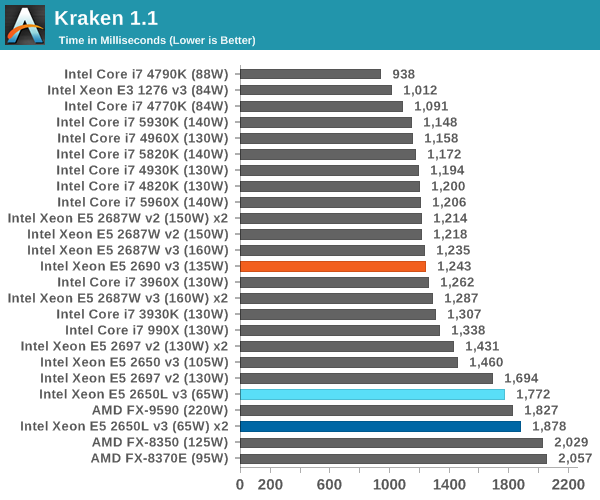
WebXPRT
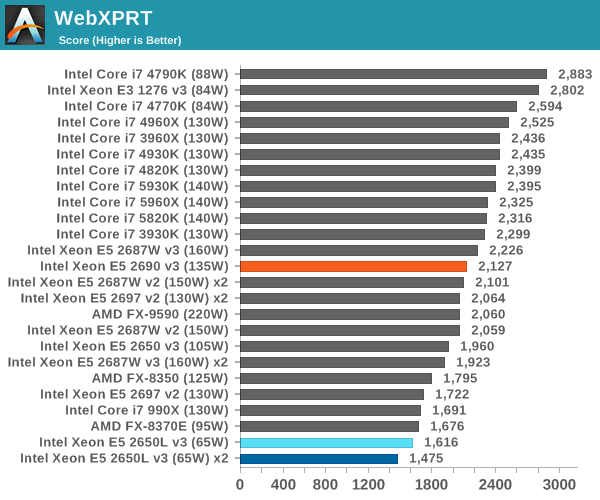
Google Octane v2











52 Comments
View All Comments
SanX - Thursday, November 6, 2014 - link
All that is secondary to production cost. Trying to emphasize that the production cost of Intel chips is barely 30-50 bucks at the most. Probably much less since those mibile chips still get the profit. Some 4 core mobile chips with 1 billion transistors are already sold for 4 dollars and still bring the profitDeath666Angel - Sunday, November 9, 2014 - link
Those guys do not invest anything in R&D and the chips are much smaller due to less complex cores and uncore areas.dragonsqrrl - Thursday, November 6, 2014 - link
Trollololololruthan - Thursday, November 6, 2014 - link
Very great article theme, i can complain about some particular things in article, but in general im really grateful that such article exist at all.ruthan - Thursday, November 6, 2014 - link
To results, i would like to see comparison 65W Xeon with Core i7 architecture -65W model - 4590S head to head.In comparison Core i7 3770k - for 320$ and this 1320$ is 1000 bucks for what?
+ 25% of performance in most of multi threaded benchmarks and - 5% in gaming and generally limited mainboard choice and + for ECC memory.
If there would be +50% in multithreaded apps i would consider Xeon for my workstation, otherwise it does make no sense. 12 weak cores is nothing to be excited, or my good for some web, DB server, or visualization - here im still curious about results.
LeptonX - Thursday, November 6, 2014 - link
Something wrong with the results they seem inconsistent, why doesn't 2687W v3 mop the floor with 5960X? By all means it should as it have both more cores and more cache, yet it loses to the i7 by a quite significant margin sometimes. Is that the result of using the bigger die which is quite different in cores arrangement and also have bigger but slower cache. Still, I think it should win practically everywhere and yet it even manages to loses to its predecessor(2687 V2) in Linux-Bench NPD FD and the margin of victory of 5960X is strangely high. Were they tested in different motherboards or even with MCE enabled on 5960X and disabled on 2687W V3? How can you explain those results?Ytterbium - Friday, November 7, 2014 - link
MCE doesn't work with Xeon's I have 2687 V2 & had 4960x, so it could be that.kordian - Thursday, November 6, 2014 - link
Why are you guys doing gaming benchmarks on server processors? No one is buying $2500 processors for gaming when a $500-$1000 i7 will do just as well or better at it.Where are the server workload benchmarks that used to accompany Xeon reviews? I want database benchmarks, not Tomb Raider benches.
Also, the power delta is stupid/useless, as others have pointed out. Higher deltas could mean less efficient, or better at idling, and there's no way to tell which is which.
esterhasz - Friday, November 7, 2014 - link
Yeah, this is a strange review. Browser benchmarks? Games? Send the chips to Johan already.Samus - Thursday, November 6, 2014 - link
Man that's an amazing CPU for $2000...